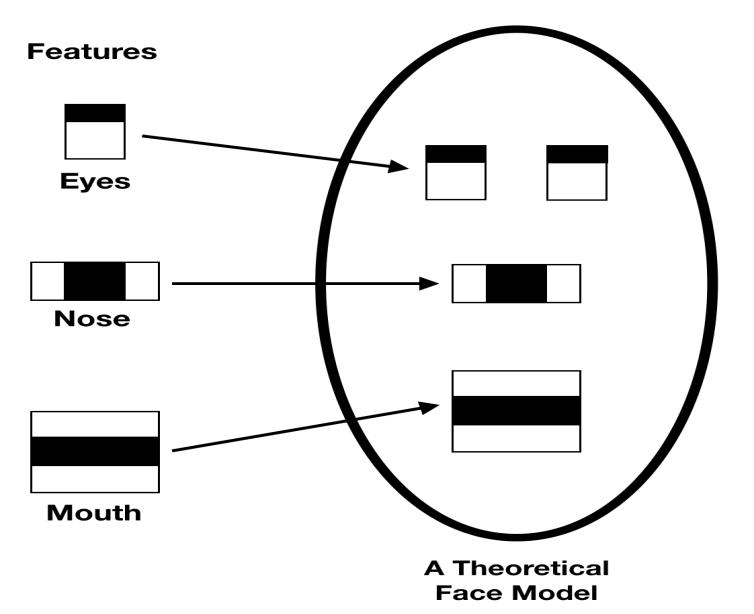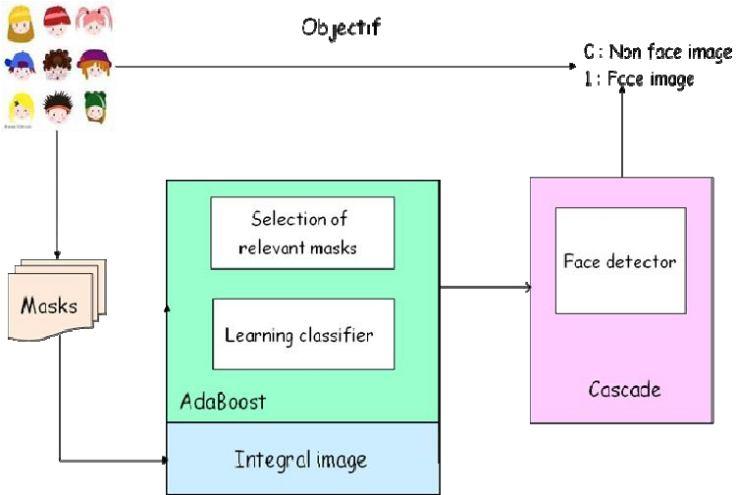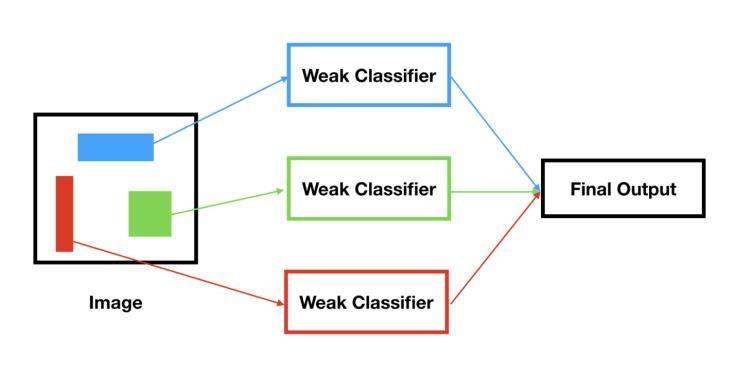
ISSN: 2321 9653; IC Value: 45.98; SJ Impact Factor: 7.538

10 Issue IX Sep 2022 Available at www.ijraset.com


ISSN: 2321 9653; IC Value: 45.98; SJ Impact Factor: 7.538

10 Issue IX Sep 2022 Available at www.ijraset.com
Abstract: In every day to day life, we come across a lot of humans around us wearing masks and we can identify by just looking at them which kind of ask they are wearing, or if they are wearing it properly or not. But what if we want to tell about a large number in just a second. To overcome this situation, this system will be designed to detect the face of the person and generate a response whether someone is wearing a mask, if yes then is he/she wearing it properly or not, and at the end what kind of mask is it. And we will be able to process this data for thousands of people at a single instance.
Keywords: algorithm, accuracy, image, processing, covid19, mask
According to the World Heath Organization (WHO) report dated July 12, 2020, the current COVID 19 outbreak has infected over 13,039,853 people and caused more than 571,659 deaths in more than 200 countries around the world, with a mortality rate of approx. 37% compared to less than 1% for influenza. A novel corona virus has caused person to person transmission, but as far as we know, the novel corona virus that causes illness 2019 (COVID 19) can also be transmitted by an asymptomatic carrier who has no covid symptoms. There is no clinically authorized antiviral drug or vaccination that is effective against COVID 19 as of yet It has swiftly expanded around the world, posing significant health, economic, environmental, and social issues to the whole human population. Currently, WHO recommends that the people wear face masks to reduce the risk of virus transmission and maintain a social distance of at least 2m between individuals to prevent disease transmission from person to person. Furthermore, several public service providers insist that clients only use their services if they wear masks, and maintain a safe social distance. As a result, detecting face masks and maintaining acceptable social distances has become critical image detection job for assisting the global civilization. This research outlines a method for preventing the virus from spreading by monitoring in real time if people are using safe social distance and wearing face masks in public locations. The Covid19 pandemic is sweeping the globe. The fight against Corona virus necessitates a plethora of crucial tools. Face Mask is one of these requirements. Initially, face masks were not required for everyone, but as the day progressed, scientists and doctors advised that everyone wear them. Now we'll utilize the Viola Jones technique to see if someone is wearing a face mask or not. Viola Jones technique uses image processing to determine whether or not a person is wearing a mask. The application can be used with any existing or new IP cameras to identify people wearing/not wearing masks. We will look at several crucial features of face mask detection in this project, not just for Covid19 situations, but also for ordinary cases. The purpose of face detection is to see if the image or video contains any faces. If there are many faces, each one is encompassed by a bounding box, so we can tell where they are. Feature Based Approach and Image Based Approach are two methods for detecting faces. The melanoma normally occurs in the young and middle aged people. The periodic visits to physicians are must to check and identify these kinds of diseases. But there are occasions like the pandemic situation like the spread of coronavirus diseases (COVID) that the whole world is presently experiencing. It may be very difficult to contact a physician. Therefore, the proposed work would also be very helpful to people who could not contact a physician directly as the methodology involves online based tele medicine approach.
Object identification algorithms based on deep models have made amazing development in computer vision in recent years, and they are potentially more capable than shallow models in tackling complicated problems. Person detection deep models emphasize feature learning, contextual information learning, and occlusion handling. Deep learning object detection models may now be classified into two groups: (i) two stage detectors like R CNN, Fast R CNN, and faster R CNN, as well as its derivatives, and (ii) one stage detectors like YOLO and SSD. Two stage detectors execute detection in phases, with the first step computing proposals and the second stage classifying them into object categories. Some approaches, like YOLO and SSd Multibox, regard detection to be a regression issue and just look at the image once for detection.
Journal for
Applied Science & Engineering Technology (IJRASET)

ISSN: 2321 9653; IC Value: 45.98; SJ Impact Factor: 7.538 Volume 10 Issue IX Sep 2022 Available at www.ijraset.com
Ref No. Author Title Methodology
1 Mohamed Loey, Gunasekaran Manogaran, MohamedHamedN. Tahad, NourEldeenM.Khalifa
2 G. Saranya, Dipshikha Sarkar, Sayan Ghosh, Lokesh Basu, K. Kumaran,N.Ananthi
3 Faisal Najib Abdullah, Mohamed Nurkamal Fauzan,NovianaRiza
A hybrid deep transfer learning model with machine learning method for face mask detection in the era of covid 19 pandemic.
A hybrid deep and machine learning model proposed for face mask detection. The model can impede the coronavirus transmission, specially COVID 19. Three face mask dataset haveexperimentedwiththisresearch.
Face mask Detection using CNN The main aim is to identify whether a person’s face is covered with mask or not as per the CCTV camera surveillance ora webcamrecording. It keeps on checkingif apersoniswearingamaskornot.
Multiple Linear Regressionand deep learning in body temperaturedetectionandmask detection
4 Gedik, Onur, Demirhan, Ayse Comparison of the Effectiveness of deep learning methods for face mask detection
5 Devrim Kayali, Kamil Dimilier, BoranSekeroglu
Face Mask detection and classification for COVID 19 usingdeeplearning
Multiple Linear Regression and deep learning in body temperaturedetectionandmaskdetection.
Performance comparison of the automated deep learning based models including the ones that use transfer learning forfacemaskdetectionoimageswasperformed.
A dataset was obtainedbyadding face masks tothe existing Labeled Faces in the Wild (LFW) dataset to detect three mask wearing conditions; correct, wrong, and no mask. The NASNetMobile and ResNet50 networks were trained using theconsidereddataset.
6 Yazid Rahman Arif, Aji Gautama Putrada, Rizka RezaPahlevi
7 Stephanie Anderson, Suma Veeravenkatappa, Priyanka Pola, Seyedamin Pouriyeh, MengHan
8 ShashiYadav
An Evaluation of a Modified Haar LikeFeaturesbasedMask Detection in the COVID 19 spreadprevention
The System proposes a a face mask detection model using the HAAR cascade method to detect faces that have been modified and trained to detect face mask features on human faces.
Automatic Face Mask DetectionusingDeeplearning Introduced a facemaskdetectionmodel usingdeeplearning. We have taken into consideration three different categories totrain ourmodel;Mask,nomaskandincorrectmask.
Deep learning based safe social distancing and face mask detection in public areas for COVID19 Safety guideline Adherence
The system favors the society by saving time and helps in lowering the spread of corona virus. It can be implemented effectively in current situation when lockdown is eased to inspect perope, public gathering, shopping malls, etc. Automated inspection reduces manpower to inspect the publicandalsocanbeusedinanyplace
9 Minghu Wu, Hanhui Yue, JuanWang
10 Yanwei Pang, Jin Xie, Muhammad Haris Khan, Rao Muhammad Anwer, Fahad Shahbaz Khan, Ling Shao
Object Detection Based on RGCmaskR CNN
First, they compared ResNet with different layers, finding that Resnet 101 64 x 4d is superior to other backbone networks. Secondly, during the training of the test model, the performance of mask R CNN suffered from a small batch processing scale, resulting in inaccurately calculated meanandvariance
Mask Guided Attention Network for Occluded PedestrianDetection
Empirically demonstrate that course level segmentation annotations provide reasonable approximation to their dense pixel wisecounterparts.
The system is designed to detect the face of the person and generate a response whether the person is wearing a mask, if yes then is he/she wearing it properly or not, and at the end what kind of mask is it. The use of Viola Jones Algorithm specifically in order to read the Haar features of a human face on a grayscale contrast to enhance the image processing.
Factor
Impact Factor 7.894
International Journal for Research in Applied Science & Engineering Technology (IJRASET)

ISSN: 2321 9653; IC Value: 45.98; SJ Impact Factor: 7.538 Volume 10 Issue IX Sep 2022 Available at www.ijraset.com
Digital image features called Haar like features are employed in object recognition. They were utilized in the first real time face detector and got their name from their intrusive resemblance to “HAAR Wavelets”.


The Viola Jones object detection framework was proposed by Paul Viola and Michael Jones in 2001 as an object detection framework. Although it may be trained to recognize a number of object classes, the problem of face detection was the driving force behind it.

The speed with which the features may be evaluated does not adequately compensate for their number, however. For example, in a standard 24x24 pixel sub window, there are a total of M=162,336 possible features, and it would be prohibitively expensive to evaluate them all when testing an image. Thus, the object detection framework employs a variant of the learning algorithm AdaBoost to both select the best features and to train classifiers that use them. This algorithm constructs a “strong” classified as a linear combination of weighted simple “weak” classifiers.
Input: Set of N positive and negative training images with their labels (xi, yi). If image I is a face yi=1, if not, yo= 1
SJ Impact Factor 7.538
Impact Factor 7.894 |
ISSN: 2321 9653; IC Value: 45.98; SJ Impact Factor: 7.538 Volume 10 Issue IX Sep 2022 Available at www.ijraset.com



1) Monitoring: One of the main applications of this system is to monitor the public areas with people covering their faces with proper masks or not.
2) Statistical: The second important application of this system is providing the collected data for statistical purpose. To calculate the ratio of the people wearing masks in public areas and use the statistics for research purposes.
3) Industrial: The industries can rely on the system in order to keep an inspection and maintain the discipline among the employees to make sure they follow the protocol of wearing mask all the time during work.
The language that is used in this system will be Python as it is a high level, interactive, general purpose programming language that is widely used. It is employed in web development, machine learning applications, and all other cutting edge software technologies. Its language elements and object oriented approach are designed to assist programmers in writing clear, logical code for both small and big projects. Python’s concise, easy to learn syntax prioritizes readability, which lowers software maintenance costs. The library that is used in this system will be OpenCV as it is a large open source library for computer vision, machine learning, image processing, and it currently plays a critical part in real time operations, which are critical in today’s systems. It maybe used to detect items, faces, and even human handwriting in photos and movies. Python can process the OpenCV array structure for analysis when it is combined with the modules such as NumPy. We employ vector space and execute mathematical operations on these features to identify visual patterns and their various features.
Some other important libraries used are TensorFlow, Keras, Numpy, MatPlotLib, Scipy and the instructions will be put down in Jupyter Notebook. It is an open source project that allows you to create beautiful, high quality books and documents out of computational data.
The accuracy of the system in detecting the presence and absence of mask on the human face is approx. 99.34% which is very decent amount of accuracy being achieved using the image processing technique.
ISSN:
10 Issue IX Sep
at
Factor:
The system helps in:
1) Cost Efficient
High Detection Rate
Increased Accuracy
Less Processing Tim
The proposed system is an approach that uses image detection techniques to help maintain a secure environment and ensure individual protection by automatically monitoring public places to prevent the spread of the COVID 19 virus, as well as assisting the police by reducing their physical surveillance work in containment zones and public areas where real time surveillance is required.
As a result, in the current circumstances, when the lockout is being lifted, this proposed system will be effective in tracking public locations in an automatic manner. We’ve gone over the tracking of identification of face masks that aid human health in great detail. This solution was successfully implemented and tested in real time.


Because real time actions have the potential to drastically minimize violations, the suggested system would promote public safety by saving time and assisting tin the reduction of corona virus spread. This method can be employed in temples, shopping malls, metro stations, and airports, among other places. The system shows out to be approx. 99.34% Accurate
[1] S. Wang Chen, Horby Peter W, Hayden Frederick G, Gao George F. A novel coronavirus epidemic of global concern for health. It's the Lancet. 2020;395(10223):470 473. 10.1016 / S0140 6736(20)30185 9.
[2] Matrajt L, Leung T. Evaluating the efficacy of social distancing strategies to postpone or flatten the curve of coronavirus disease. Emerg Infect Dis, man. 2020: [3] Chen, S., Zhang, C., Dong, M., Le, J., R., M., 2017b. Using rankingcnn for age estimates, in: IEEE Conference on Computer Vision and Pattern Recognition (CVPR)
[4] Sandler, Mark, Andrew Howard, Menglong Zhu, Andrey Zhmoginov, and Liang Chieh Chen, "Mobilenetv2: Inverted residues and linear bottlenecks," IEEE Conference on Computer Vision and Pattern Recognition, pp. 4510 4520. 2018
[5] C.Fu, W.Liu, A.Ranga, A. Tyagi, A. Berg, "DSSD: deconvolutional single shot detector model," arXiv preprint arXiv:1701.06659, (2017)
[6] Lin, Tsung Yi, Piotr Dollár, Ross Girshick, Kaiming He, Bharath Hariharan, and Serge Belongie, "Type Pyramid Networks for Object Detection," IEEE [7] G. Jignesh Chowdary, Narinder Singh Punn, Sanjay, Kumar Sonbhadra, Sonali Agarwal,” Face Mask Detection Using Transfer Learning of InceptionV3

International Journal for Research in Applied Science & Engineering Technology (IJRASET)

ISSN: 2321 9653; IC Value: 45.98; SJ Impact Factor: 7.538
Volume 10 Issue IX Sep 2022 Available at www.ijraset.com
[8] Amit Chavda, Jason Dsouza; Sumeet Badgujar; Ankit Damani, Multi Stage CNN Architecture for Face Mask Detection”
[9] Balasundaram A; Naveen Kumar M; Arun Kumar Sivaraman; Rajiv Vincent; Rajesh M, “Mask Detection in Crowded Environment using Machine Learning”
[10] Arjya Das, Mohammad Wasif Ansari; Rohini Basak, “Covid 19 Face Mask Detection Using TensorFlow, Keras and OpenCV”
[11] Zekun Wang, Pengwei Wang, Peter C. Louis, Lee E. Wheless, Yuankai Huo,”Wear mask: Fast in browser face mask detection with serverless edge computing for COVID 19”
[12] Steffen Illium, Robert Müller, Andreas Sedlmeier, Claudia Linnhoff Popien,”Surgical Mask Detection with Convolutional Neural Network and Data Arguentations on spectrograms
[13] Philipp Klumpp1 , Tomas Arias Vergara ´ 1,2 , Juan Camilo Vasquez Correa ´ 1,2 , Perez Toro ´ 1,2 , Florian Honig ¨ 1 , Elmar Noth ¨ 1 , Juan Rafael Orozco Arroyave2, “Surgical mask detection with deep recurrent phonetic models”
[14] Mohammad Marufur Rahman; Md. Motaleb Hossen Manik; Md. Milon Islam; Saifuddin Mahmud; Jong Hoon Kim, “An Automated System to Limit COVID 19 Using Facial Mask Detection in Smart City Network”
[15] Safa Teboulbi,1 Seifeddine Messaoud,1 Mohamed Ali Hajjaji,1,2 and Abdellatif Mtibaa,”Real Time Implementation of AI Based Face Mask Detection and social distancing measuring system for COVID 19 prevention.”
SJ Impact Factor 7.538 | ISRA Journal Impact Factor 7.894
